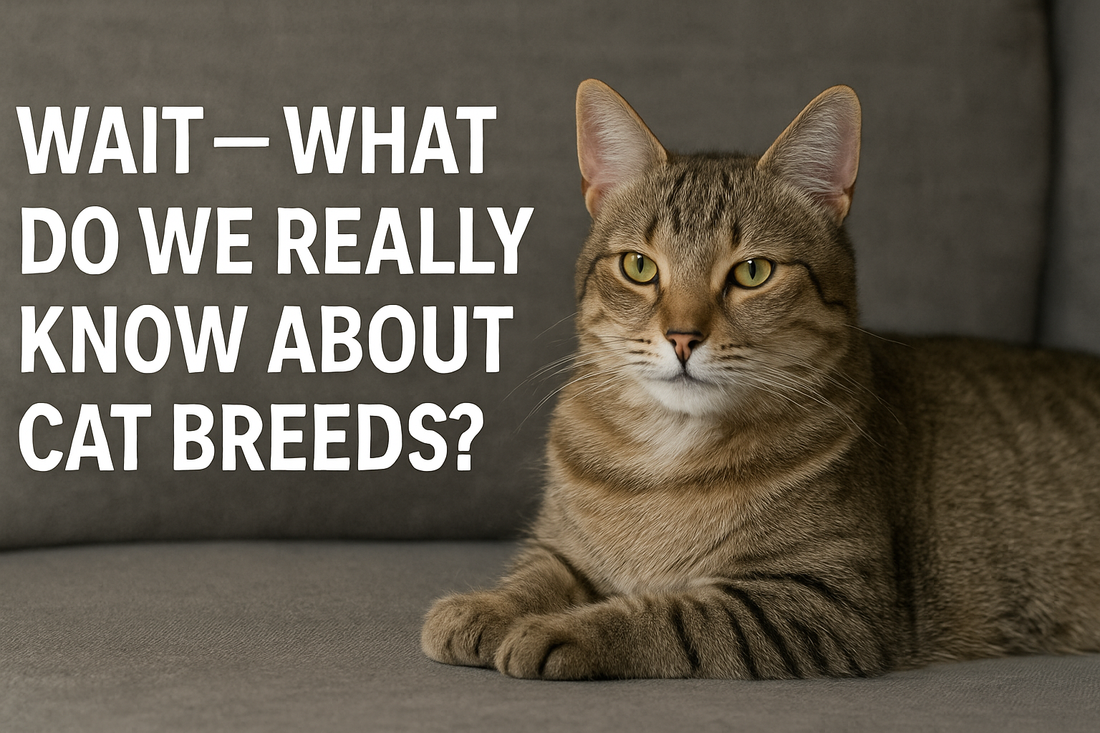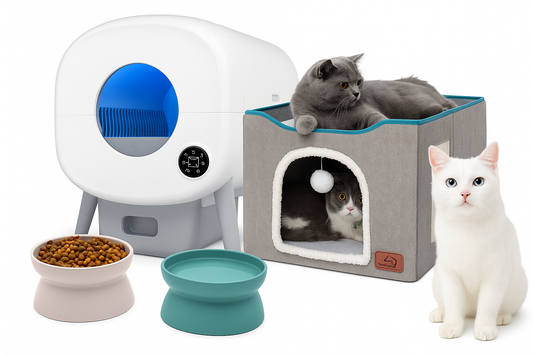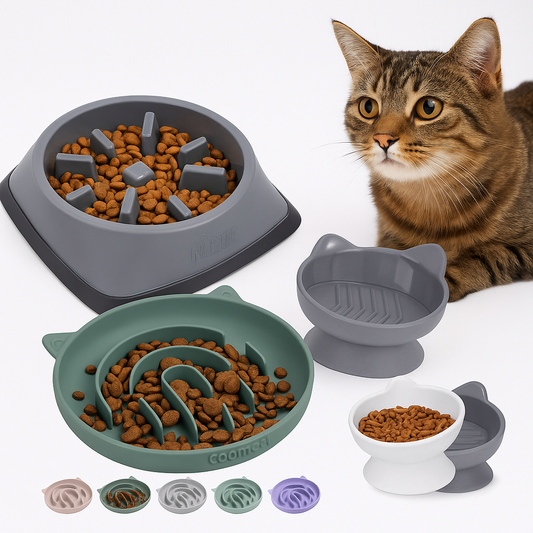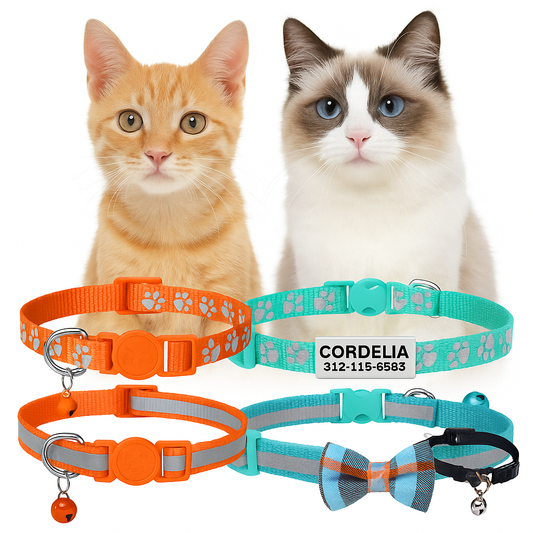
The Latest Cat Genetics Study Just Changed What We Know About Breeds
Wait — What Do We Really Know About Cat Breeds?
When people think of cat breeds, the usual suspects pop up: Siamese, Persian, Maine Coon, Sphynx. The names come with expectations — a Siamese is vocal, a Persian is aloof, a Maine Coon is massive and friendly. But what if all of this was built on shaky ground?
Until recently, breed identity in cats was based mostly on appearance and pedigree papers. Unlike dogs, which have a long history of selective breeding for work and companionship, cats haven’t followed the same path. In fact, most modern cat breeds were only developed in the last 70 to 100 years — and often more for looks than function or health. As geneticist Leslie Lyons notes, cat breeds have generally been created through selective breeding based on aesthetic traits, not deep genetic divergence .
So while we treat breed names as solid categories, recent research suggests they’re more like marketing labels than true genetic boundaries. A 2023 study published in PLoS Genetics analyzed the DNA of thousands of domestic cats and found that many breeds share significant genetic overlap. What this means is that the traits we associate with specific breeds — such as coat patterns or body shape — often appear across different genetic backgrounds .
Compare that to dogs, which have been shaped over thousands of years to herd, hunt, guard, and retrieve. The result is a much sharper genetic split between dog breeds. Cats, on the other hand, likely domesticated themselves by sticking close to human settlements to hunt rodents — a process that didn't involve deliberate human selection at first .
In short: the way we classify cats into breeds is more recent, more superficial, and less genetically grounded than many people assume. And thanks to modern DNA research, that understanding is starting to shift.
References:
- Lyons, L.A. (2012). Genetics of domestic cat breeds. Veterinary Clinics: Small Animal Practice.
- Kurushima, J.D. et al. (2023). Ancestry and genomic diversity of domestic cats across the world. PLoS Genetics.
- Ottoni, C. et al. (2017). The palaeogenetics of cat dispersal in the ancient world. Nature Ecology & Evolution.
A recent large-scale genetic study has provided new insights into the genetic diversity of domestic cats. Researchers analyzed the DNA of over 11,000 cats from around the world, utilizing advanced genomic mapping tools to study single nucleotide polymorphisms (SNPs)—the tiny markers that offer clues about traits, ancestry, and inherited conditions.
The goal was to understand the extent of genetic variation within breeds and assess how distinct these breeds truly are.
Key Findings:
- Cat breeds are not genetically isolated. The study found significant genetic overlap among most breeds, indicating that the boundaries between breeds are more fluid than previously thought.
- "Purebred" cats often carry DNA from other breeds. Genetic analyses revealed that many cats identified as purebred possess genetic markers from multiple breeds, some of which may not be visually apparent.
- Mixed-breed cats can carry breed-associated traits. Traits traditionally associated with specific breeds were found in mixed-breed cats, suggesting that these characteristics are more widespread across the feline population.
These findings highlight the complexity of feline genetics and suggest that our traditional classifications based on physical traits may not accurately reflect the underlying genetic diversity of domestic cats.
References:
- Anderson, H., Davison, S., Lytle, K.M., et al. (2022). Genetic epidemiology of blood type, disease and trait variants, and genome-wide genetic diversity in over 11,000 domestic cats. PLOS Genetics, 18(6), e1009804.
- Alhaddad, H., Abdi, M., Lyons, L.A. (2021). Patterns of allele frequency differences among domestic cat breeds assessed by a 63K SNP array. PLOS ONE, 16(2), e0247092.
Let’s Talk About Breed Identity: A Social Construct?

It turns out that breed categories, while useful in some ways, are largely a human invention. When you strip away the aesthetics (fur length, eye color, ear shape), most cats don’t fit neatly into boxes.
Take the Abyssinian, often called the oldest domesticated breed. Genetically? Not so distinct from cats found across the Mediterranean. The "exotic" label was mostly due to its look and marketing in the 20th century.
Or the Bengal — a hybrid breed that includes wild cat DNA from the Asian leopard cat. Many Bengals today carry less than 10% of that wild DNA, yet the label sticks.
So what does this mean for cat lovers and breeders? It means we’re entering a new era where cat DNA testing may carry more weight than a pedigree certificate.
The Rise of Cat DNA Testing Kits (and What They Actually Tell You)
Ten years ago, cat DNA testing was limited to academic labs. Now, it’s available on Amazon.
Popular companies like Basepaws, Wisdom Panel, and Orivet are offering test kits you can use at home. Swab your cat’s cheek, send it off, and in a few weeks, you get a report with information like:
- Breed composition (based on genetic clusters)
- Health markers (for conditions like PKD or hypertrophic cardiomyopathy)
- Trait markers (like coat color, tail length, or ear curl)
- Ancestry (regional lineage, like Western Europe, Northern Asia, etc.)
Here’s what’s fascinating:
People often discover that their “regular” housecat has small percentages of recognized breeds in their DNA — Siberian, Burmese, even Egyptian Mau. And in many cases, the genes linked to specific traits (say, folded ears or colorpoint coats) exist in cats without any known breed history.
These tests are reshaping how we think about identity in cats. Your shelter rescue might be more genetically unique than a show cat — and certainly just as interesting.
Health Insights: More Than Just Breed Trivia
While finding out your cat is part Ragdoll is fun, the real value in DNA testing comes from health screening.
Certain inherited diseases are more common in specific breeds. For example:
- Polycystic kidney disease (PKD) is prevalent in Persian lines.
- Hypertrophic cardiomyopathy (HCM) is common in Maine Coons and Ragdolls.
- Progressive retinal atrophy (PRA) is found in Abyssinians and Bengals.
Knowing your cat’s genetic risk allows you to work with your vet proactively. Early screening, lifestyle adjustments, and even dietary choices can be influenced by this information.
And because many mixed-breed cats carry recessive genes without showing symptoms, these tests can reveal hidden risks that wouldn't be obvious otherwise.
Breeds and Behavior: Can Genetics Predict Personality?

Here’s where things get controversial. We love to say Siamese are chatty, Persians are chill, and Bengals are wild. But is it genetic, or just good old-fashioned stereotyping?
According to recent studies, behavior traits do have some genetic links. Researchers have found markers associated with sociability, activity level, and vocalization. But — and this is key — environment plays a massive role.
Your “calm” Persian might be high-strung if raised in a chaotic home. A mixed-breed cat might act like a Burmese if it grew up cuddled constantly by humans.
So while DNA testing can hint at behavioral tendencies, it won’t predict them with certainty. Still, it adds another layer of insight for pet parents trying to understand their cat’s quirks.
What This Means for Breeders
For breeders, this genetic revolution is both a challenge and an opportunity.
Challenges:
- Breed purity is harder to define genetically.
- Hidden ancestry in breeding lines could conflict with official standards.
- Traits previously thought exclusive to certain breeds may appear in others.
Opportunities:
- Breeding programs can prioritize genetic health over appearance.
- Greater transparency with buyers through DNA-backed reports.
- Ability to track and reduce inherited diseases.
In the long run, this shift could make breeding more ethical, informed, and sustainable.
What It Means for Everyday Cat Owners
Let’s be real: most people don’t care about breed purity. They care about their cat’s health, happiness, and maybe a few cute surprises along the way.
Here’s why this research matters for you:
- You can understand your cat’s ancestry and traits beyond the surface.
- You’ll be equipped to spot health risks early.
- You’ll gain a deeper appreciation for your cat’s unique genetic story.
And let’s not ignore the entertainment factor. Seeing your shorthaired gray tabby come back with 6% Turkish Van and 3% Bengal? That’s fun. And a great convo starter.
The Bigger Picture: What Genetics Tells Us About Cats (and Ourselves)
We’re learning that cats — just like humans — are complex mosaics. The idea of “purebred” might feel clean and tidy, but the reality is far richer.
This research pushes us toward more inclusive thinking. It reminds us that every cat has a story written in its DNA, whether it came from a breeder, a rescue, or the street.
As DNA testing becomes more mainstream, it’s likely we’ll see a cultural shift. Pedigree might matter less, and genetic health, history, and individuality will matter more.
Quick Takeaways

If you’re skimming or just want the highlights, here’s what the latest cat genetics research is telling us:
- A massive new cat genetics study revealed that cat breeds are more blended than we thought.
- Cat DNA tests can now uncover ancestry, traits, and health risks.
- “Breed identity” is fuzzier — and that’s a good thing.
- Mixed-breed cats are just as genetically fascinating as pedigrees.
- The future of feline care will likely revolve around genetics, not looks.
Final Thoughts
Whether you’re a lifelong cat lover, a breeder, or just someone curious about your furball’s backstory, this research invites you to see cats differently. Not as categories or caricatures, but as genetically rich, wildly unique individuals.
In a way, this study doesn't just tell us more about cats — it reminds us that the labels we use, while useful, don’t define the full story. And that’s kind of beautiful.



